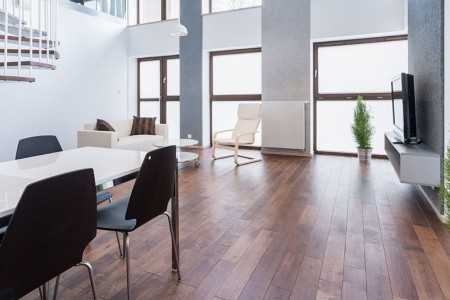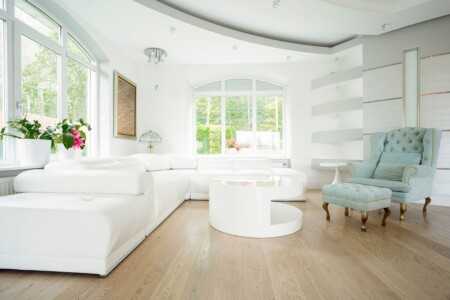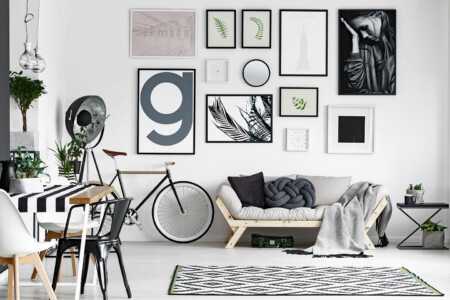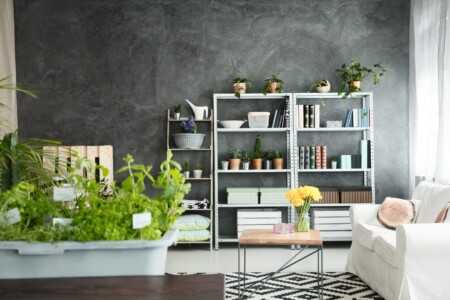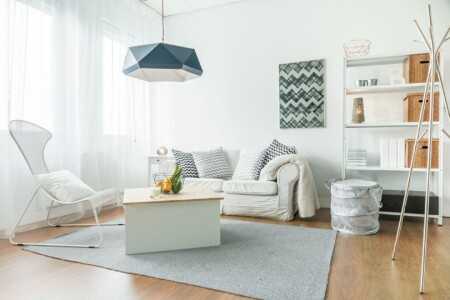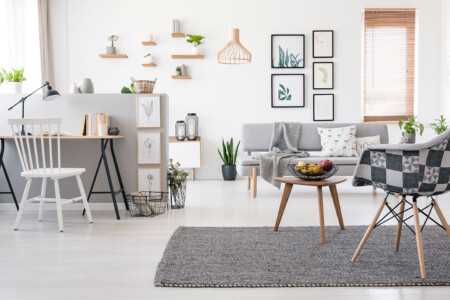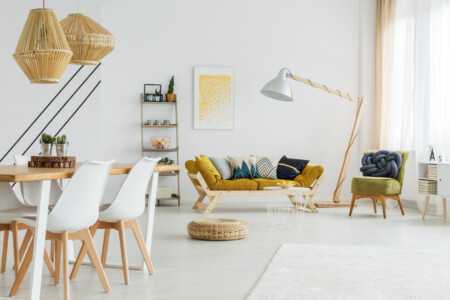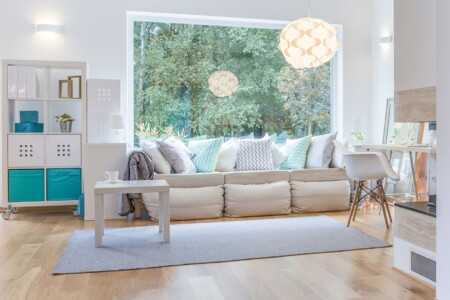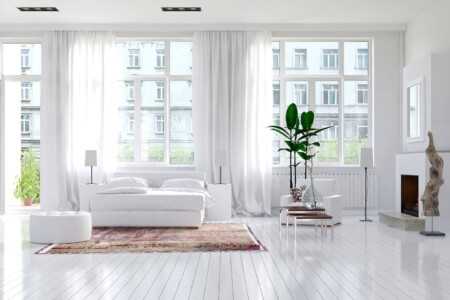How suitable is this 2 persons 1-room studio in Hurghada Mubarak 2 for school-age children?

Evaluating the suitability of a 2 persons 1-room studio in Hurghada Mubarak 2 for school-age children
Assessing living space for school-age children
When considering a 2 persons 1-room studio in Hurghada Mubarak 2 for school-age children, space is one of the key factors to evaluate. A studio designed primarily for two adults may feel cramped once you add school materials, personal belongings of children, and additional furniture like study desks or storage units. School-age children need a dedicated area to focus on their homework, hobbies, and rest, which requires thoughtful spatial planning.
The limited square footage in a typical studio means multi-purpose furniture and creative layouts become essential. Bunk beds with study desks, foldable tables, and wall-mounted shelves can help maximize usable space. However, even with careful design, the open layout often found in studios may lack separation between living, sleeping, and study zones, which can affect concentration and privacy—both important for children’s development and comfort.
Safety and environment considerations for children
Safety and environment are critical when deciding if a Mubarak 2 studio is suited for school-age children. Mubarak 2 is a well-established area with relative safety, but the studio itself must be child-friendly. Look for secure windows, childproof electrical outlets, and minimal clutter to prevent accidents. Adequate natural light is also important for children’s well-being and to create a positive study environment.
The building’s surroundings play a role too. Mubarak 2, being close to schools, parks, and community centers, offers opportunities for children to engage in outdoor activities after school hours. But consider the building’s proximity to busy roads or noisy areas that might disturb sleep or study time.
Access to educational and recreational facilities
One of the advantages of living in Hurghada Mubarak 2 is the vicinity to several educational institutions and recreational parks. For school-age children, having easy access to schools reduces commuting time and enhances safety. It also allows parents to be more involved in their child’s school routine.
Beyond schools, children benefit greatly from nearby playgrounds, libraries, and community centers that promote social interaction and extracurricular activities. When evaluating the suitability of the studio, consider whether these amenities are within walking distance or a short drive to support a balanced lifestyle.
Storage and organization challenges in the studio
Storage space is often limited in small studios, and this can impact families with school-age children. Kids accumulate textbooks, art supplies, toys, and clothes that require organized storage to maintain a tidy living space. Without adequate storage, clutter can become overwhelming and distracting for children trying to focus on their studies.
When inspecting the 2-person studio, verify what built-in storage options exist. Some studios include wardrobes and cabinets, but you may need to add compact shelving solutions or under-bed storage boxes. Organization is key to maximizing the lifestyle quality in such a compact living unit.
Evaluating privacy and comfort for growing children
Privacy is essential for school-age children, especially as they grow older. Sharing a single room with another person, whether a sibling or parent, can limit personal space. Noise distractions and lack of separation can impact sleep quality and the ability to concentrate on homework.
Consider whether the layout permits partitioning or the use of room dividers to create distinct zones. Curtains, movable screens, or bookcases can help introduce some separation within the open studio area. In terms of comfort, an AC system or fan is vital in Hurghada’s hot climate to ensure a healthy living environment for children.
Cost-effectiveness and practical living
One undeniable benefit of the 2-person studio in Mubarak 2 is its affordability. For families balancing educational costs and living expenses, a smaller, modestly priced studio helps keep budgets manageable. However, balancing cost with the needs of school-age children calls for weighing the trade-offs carefully.
Saving on rent might mean sacrificing space and comfort, which can affect your child’s daily routine and academic performance. If the studio is chosen, investing in organizational tools and creative space solutions will be necessary to turn the limited area into a child-friendly zone.
Key considerations for parents
- Space Optimization: Use multifunctional furniture and consider creative layouts to maximize available space.
- Safety Features: Ensure the studio has child-safe fixtures like window guards and secure electrical fittings.
- Proximity to Schools: Verify the distance and convenience to educational institutions in Hurghada Mubarak 2.
- Access to Outdoor Activities: Identify nearby parks, playgrounds, or community centers to support social and physical development.
- Storage Solutions: Plan for adequate storage to avoid clutter and maintain an organized living environment.
- Environmental Comfort: Air conditioning and noise control are important to create a conducive atmosphere for learning and rest.
- Privacy Options: Explore possibilities for room dividers or partitions within the studio layout.
Ultimately, whether a 2 persons 1-room studio in Hurghada Mubarak 2 suits school-age children depends on the family’s priorities and flexibility. While the space and layout pose challenges, with careful planning and adaptation, it can be a practical living option. Focus on enhancing the functional areas for study, rest, and play to support your child’s growth in this compact yet convenient setting.
Practical tips for creating a child-friendly living space in compact studios
Maximizing space without sacrificing comfort
Living in a compact studio presents unique challenges, especially when school-age children call that space home. Balancing functionality and comfort is essential to create a child-friendly environment. The key lies in smart organization, creative use of furniture, and thoughtful zoning to meet the needs of both daily living and study time.
Choose multifunctional furniture
In small living spaces, every piece of furniture should serve more than one purpose. Opt for a sofa bed or a loft bed with a desk underneath to provide sleeping space and a dedicated study area without using extra floor space. Foldable tables and chairs can easily be stored away when not in use, freeing up space for playtime or other activities.
Storage beds with drawers underneath are also excellent for keeping clothes, toys, or school supplies organized and out of sight. By integrating these smart furniture options, you can create a clutter-free environment that boosts focus and reduces stress for your children.
Designate a specific study zone
School-age children benefit from having a dedicated area for homework and reading. Even within a one-room studio, carving out a quiet and well-lit corner as a study zone can enhance concentration and productivity. Consider using room dividers, bookshelf panels, or curtains to visually separate the study space from sleeping and play areas.
Ensure the study area has adequate lighting, comfortable seating, and easy access to school supplies. Keep the layout simple and free of distractions. Small shelves or wall-mounted organizers can keep stationery and books neatly arranged while maximizing floor space.
Utilize vertical space efficiently
When floor area is limited, turning to vertical storage solutions is a game-changer. Wall hooks, floating shelves, and pegboards can help organize backpacks, jackets, and educational materials without cluttering the floor. This frees up space for your child to move around safely.
Installing a deluxe shelving unit or a tall wardrobe can keep clothing and toys well-organized. Encouraging children to maintain their belongings in designated vertical spots makes tidying up easier and teaches valuable habits.
Choose safe and durable materials
When setting up a small studio for school-age children, safety is paramount. Opt for furniture with rounded edges and non-toxic finishes. Avoid glass items and unstable pieces that could tip easily.
Durable materials like wood, plastic, and metal withstand the wear and tear of daily use by active kids. Additionally, use washable and stain-resistant fabrics for cushions and rugs to keep the space clean and inviting without constant worry about spills.
Incorporate play and relaxation spaces
Children need time for play and relaxation, even in compact living quarters. A cozy corner with soft cushions or a small tent can create a special retreat for downtime or reading. Consider using modular storage boxes that double as seating or play surfaces.
Having a small basket or container specifically for toys makes it easy to tidy up and keeps clutter contained. By intentionally adding these areas, you support your child’s well-being and encourage them to enjoy their living space fully.
Maximize natural light and ventilation
Good lighting improves mood and concentration, which is especially important for school-age children attending homework sessions at home. Keep windows unobstructed and use light curtains to allow natural light to fill the room.
A compact studio may have limited ventilation, so ensure windows can open safely for fresh air. Consider adding child-safe fans or air purifiers to maintain a healthy indoor environment.
Establish easy-to-maintain cleaning routines
Maintaining a clean and organized space is easier when routines are simple and involve the whole family. Choose flooring materials that are quick to clean, such as laminate or vinyl, instead of thick carpets that trap dust.
Encourage children to put away their belongings after use and participate in light cleaning tasks appropriate to their age. This involvement nurtures responsibility and keeps the living space pleasant for everyone.
Personalize the space to reflect your child’s interests
Even in a small studio, personal touches can make the living area feel warm and welcoming. Display your child’s artwork, favorite books, or school projects on a dedicated wall or board. Use colorful storage bins or bedding to express their personality.
Personalization motivates children to take pride in their living environment and can make the space feel more like a true home.
Encourage flexibility in usage
As children grow, their needs and routines change. Designing a space that can adapt is crucial in a compact studio. Furniture that can be rearranged easily and multi-use areas help accommodate varying activities such as studying, playing, or socializing.
Keep the layout fluid and avoid overfilling the room with permanent fixtures. Flexibility ensures the space remains comfortable and functional for your child’s evolving lifestyle.
Final thoughts on creating a child-friendly studio environment
By focusing on practical design strategies like multifunctional furniture, designated study zones, smart storage, and safety considerations, you can transform a compact studio into a welcoming and efficient space for school-age children. Thoughtful planning helps maximize every square foot while supporting your child’s learning, play, and relaxation needs.
Summary of key points
When considering a 2 persons 1-room studio in Hurghada Mubarak 2 for school-age children, it’s clear that while the space may seem limited, thoughtful planning can make it a comfortable and functional environment. The compact nature of such studios requires creative solutions to meet the needs of children, especially regarding study areas, play zones, and restful sleeping arrangements. Prioritizing multifunctional furniture, proper lighting, and organized storage can transform a small studio into a nurturing space that supports a child’s growth and learning.
Creating a child-friendly living space in a compact studio is entirely achievable with simple, practical steps. Introducing designated zones—even within a single room—for homework, play, and relaxation helps children feel settled and focused. Using vertical storage and smart furniture choices can reduce clutter and maximize floor space, fostering a safe environment where kids can move and explore freely. Additionally, selecting calming colors and incorporating personal touches can make the space inviting and mentally stimulating.
Ultimately, the key to making a 2 persons 1-room studio in Hurghada Mubarak 2 suitable for school-age children lies in how the space is utilized. With careful attention to design and organization, this type of accommodation can support both the practical needs and emotional well-being of young children. Families looking at these studios need not be deterred by size constraints; instead, they can embrace innovative living solutions that create a happy, balanced home for their children.

